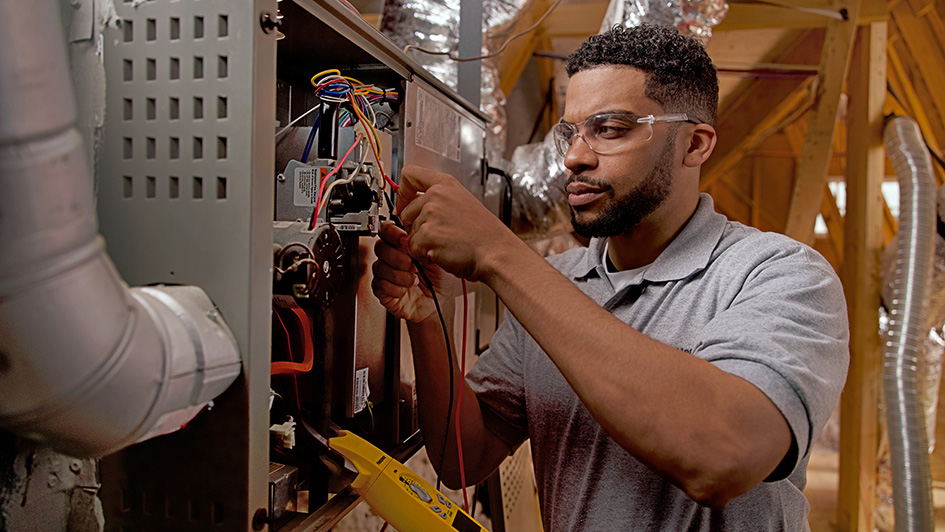
A furnace is almost always a background player in your home, ensuring you're warm across the cold winter months. It regularly isn't noticed until something breaks down.
One root cause could be that your furnace has a cracked heat exchanger. It can potentially be hazardous, so it’s critical to familiarize yourself with the symptoms of a cracked heat exchanger and what you can do if you suspect that may be the problem.
What Is a Heat Exchanger in a Furnace?
A heat exchanger helps move heat from the combustion chamber in your furnace to the air that flows inside the ventilation. It usually handles this with coils or tubes that heat up the air while acting as a barrier to keep byproducts produced in the combustion chamber, called flue gasses, from leaking out into your home.
Is a Cracked Heat Exchanger Dangerous?
Thanks to its key role, it shouldn't come as a surprise that a damaged heat exchanger can be very dangerous. A damaged heat exchanger can allow dangerous gasses – such as carbon monoxide, which can be lethal – to circulate through your home.
For obvious reasons, never use your heater if you believe it has a cracked heat exchanger, as doing so could make the entire family sick. Call an HVAC professional right away if you are worried your furnace has a cracked heat exchanger that needs to be repaired.
Four Symptoms of a Cracked Heat Exchanger:
- Furnace switches off: A crack in your heat exchanger may cause your furnace to switch off.
- Strange Smells: If the air coming out of your furnace has a powerful chemical smell, it could be an indicator that gas is leaking through cracks in your heat exchanger. These gasses, which may smell like formaldehyde, are a significant warning sign.
- Carbon monoxide alarm is triggered or you feel poisoning symptoms: If a cracked heat exchanger is emitting carbon monoxide inside your home, your carbon monoxide alarm could go off or household members may start experiencing signs of carbon monoxide poisoning. Symptoms include headaches, dizziness, weakness, nausea, vomiting or feeling tired. If your alarm goes off or you feel unwell, leave the home as soon as you can and then call for help.
- Soot: If you find black sooty accumulating on the exterior of your furnace, it’s more evidence something may be seriously wrong.
What You Can Do if Your Furnace Heat Exchanger is Cracked
If you believe your furnace has a cracked heat exchanger, contact a professional experienced in furnace installation Wilmington as soon as possible so they can inspect your system and, if needed, start a furnace heat exchanger replacement. Costs will vary depending on the situation, but estimates run in the neighborhood of $1,000 to $3,000.
However, the good news is that heat exchangers are often included in the warranty. You’ll want to confirm the warranty paperwork on your furnace, because while the warranty may not cover the entire cost of repairs, it could significantly reduce your bill.
How to Avoid a Cracked Heat Exchanger in Your Home
One of the easiest ways to minimize the risk of problems in your furnace overall is with routine furnace maintenance. Furnaces work the best when they run efficiently. Hiring a trained professional to examine your furnace for broken-down parts, clogged filters and other likely problems can help you avoid getting a big bill later on.
It’s also a good idea to inspect your furnace filters every few months – it’s encouraged some filters be changed every 90 days or sooner if they are dirty or grimy. While the filters aren't a part of the heat exchanger itself, the strain of dragging air through a clogged filter makes your entire furnace work longer to do its job. And the harder your furnace works, the more wear and tear components like the heat exchanger will endure.
